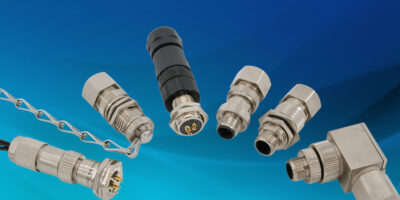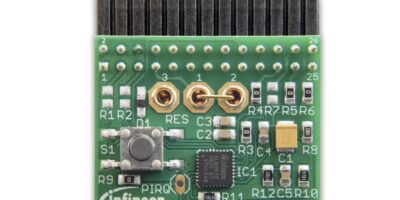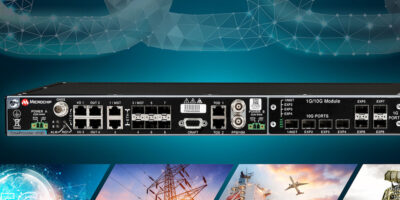Amphenol Industrial Operations has enhanced its Max-M12 product line to include an X coding, high-speed connector with support for 10Gbits per second (1000M Ethernet with CAT6 cable) data transmission and S coding for a safer connection with ‘first mate last break’. The connectors are for use in the rail and mass transit (RMT), heavy equipment vehicles, industrial automation and robotics markets.
When used on RMT door systems, on camera and communication systems, as well as on heating, ventilation, air conditioning (HVAC) systems, the Max-M12 can transmit high speed data in environments where there is high vibration, moisture, salt, dirt and debris. It can also be used for off-road vehicles, ruggedised factory automation and robotics signal applications.
The Max-M12 family of connectors is based on IEC 61076-2-101 and SAE J2839. They are backwards-compatible and can be mated with any standard M12 connector with the same indexing, assures Amphenol. The Max-M12 features several mounting options, including front or back lock/flange and wire termination styles, including solder, crimp and printed circuit tails.
The Max-M12 is rated to 4.0A and can endure extreme temperatures ranging from -55 to +125 degrees C.
All Max-M12 connectors have an IP67 rating making them dust and waterproof. They are resistant to high pressure wash downs and water immersion. Amphenol has plating designed to endure salt spray testing for up to 240 hours for use in harsh environments.
Amphenol’s Max-M12 connector in-line mated pair can withstand 444N of connector-to-cable retention forces and contact retention forces to 110N. Housed in an HDM 12 EX impact resistant metal or plastic shell, the in-line mated pair is available as a 90 degrees right angle or straight versions. When shielding is required the Max-M12 metal version is available in multiple shell styles for a variety of interconnect requirements. Both the four- and five-pin configurations are available with A, B and D polarity codes.
Amphenol Industrial Operations is headquartered in Endicott, New York, USA, providing a range of high reliability power/signal connectors and interconnection systems specifically for the industrial markets including rail/mass transit, process control, automotive manufacturing, heavy equipment, wireless base stations and petrochemical/power generation.
Its product range includes ruggedised-for-industry cylindrical, fibre optic, rectangular, and industrialised versions of Amphenol’s MIL-DTL-5015 cylindrical, MIL-DTL-26482 miniature cylindrical and GT reverse bayonet cylindrical connectors. It is ISO9001, TS96949 and MIL-STD-790-certified.
Amphenol Industrial Operations is a division of Amphenol, one of the largest manufacturers of interconnect products in the world.







